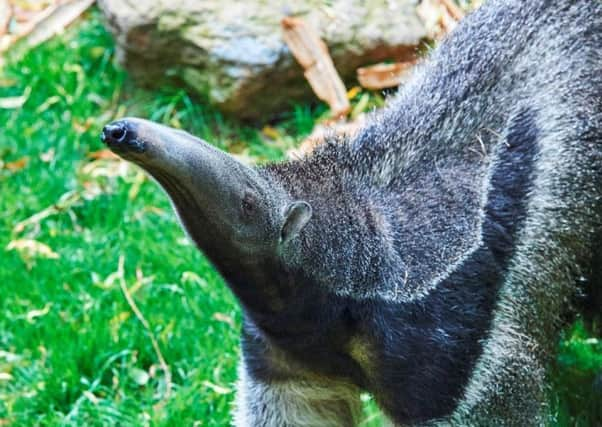There are no long faces as giant anteater makes himself at home


Diego, a male giant anteater, arrived at the zoo on Tuesday after travelling all the way from Gaia Zoo in the Netherlands.
Earlier this year, Drusillas introduced Oli, a female giant anteater. She was the first of her species to ever appear the Park. After watching Oli settle in so well to her new home, head keeper Mark Kenward and zoo manager Sue Woodgate decided it was time to find her a mate.
Advertisement
Hide AdAdvertisement
Hide AdDiego will be joining Oli in her enclosure, which has been created specifically for the giant anteaters. With a new roommate, a wealth of creature comforts and a huge pool to splash about in, keepers hope Diego will be very happy in his new home.
Mark Kenward said, “These unique insectivorous giants will bring amazement to both keepers and park visitors as they look as if they are from another planet. Anteaters have no teeth but they are exceptionally powerful, with huge front claws - even jaguars think twice about messing with them.”
“We are hopeful that Oli and Diego will breed and give us a bouncing baby anteater in the coming years.”
Since her arrival in March, Oli has been delighting visitors and has settled in nicely. It is hoped Diego is going to feel just as comfortable in his new home.
Advertisement
Hide AdAdvertisement
Hide AdSadly, these incredible animals are facing an increasing threat of extinction as a result of habitat destruction, forest fires and hunting. With only an estimated 5,000 giant anteaters left in the wild, it is imperative that they are protected before it’s too late.
These giants are often underestimated but their unique and quirky characteristics make them incredibly impressive. Growing up to 7ft in length, the giant anteater understandably has a fierce appetite and feasts on around 35,000 ants and termites each day.
Using its razor sharp claws and powerful forelegs it tears apart anthills and termite mounds, scooping up insects with a long sticky tongue that it can shoot in and out of its snout more than 150 times a minute.
There are also two other new residents on the block: Kera, the female Sulawesi black crested macaque, and Lui the capuchin monkey.